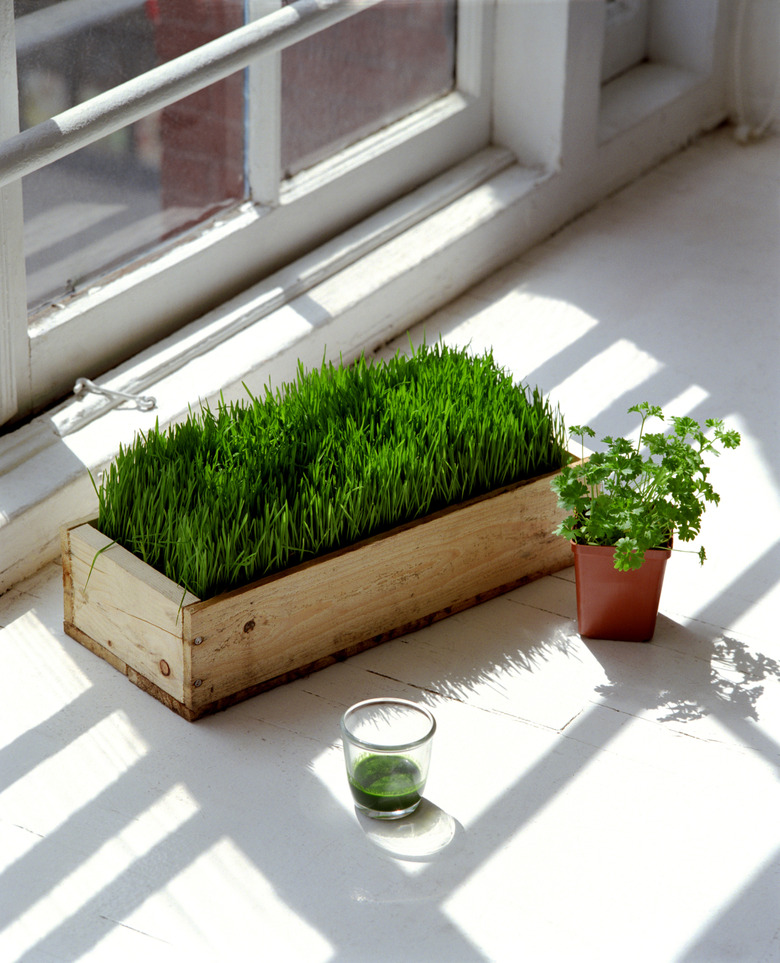What Four Accessory Pigments Are Necessary For Photosynthesis To Be Carried Out?
Light energy from the sun starts a chain reaction in plants that results in photosynthesis of energy-rich glucose (sugar) molecules from inorganic compounds. This amazing feat happens via rearrangement of molecules in the chloroplasts of plants and in the cytoplasm of some protists.
Chlorophyll a is the core pigment that absorbs sunlight for light dependent photosynthesis. Accessory pigments such as: cholorphyll b, carotenoids, xanthophylls and anthocyanins lend a hand to chlorophyll a molecules by absorbing a broader spectrum of light waves.
Function of Photosynthetic Pigments
Function of Photosynthetic Pigments
Photosynthesis occurs within stacks of flat disks called grana located in the stroma of plant cell organelles. Accessory photosynthetic pigments ensnare photons missed by chlorophyll a.
Photosynthetic pigments can also inhibit photosynthesis when energy levels within the cell are too high. The concentration of photosynthetic and antenna pigments in plant cells varies depending on the light needs of the plant and access to sunlight during the light dependent cycle of photosynthesis.
Why Is Photosynthesis Important?
Why Is Photosynthesis Important?
Most food chains that make up the food web depend on food energy produced by autotrophs through photosynthesis. Eukaryotic plant cells synthesize glucose in chloroplasts containing light absorbing pigments like chlorophyll a and b.
Oxygen is a byproduct of photosynthesis that's released into the water or air surrounding the plant. Aerobic organisms such as birds, fish, animals and human beings need food to eat and oxygen to breath.
Role of Chlorophyll 'a' Pigments
Role of Chlorophyll 'a' Pigments
Chlorophyll a transmits green light and absorbs blue and red light, which is optimal for photosynthesis. For that reason, chlorophyll a is the most efficient and important pigment involved in photosynthesis.
Chlorophyll a absorbs protons and facilitates the transfer of light energy into food energy with help from accessory pigments, such as chlorophyll b, a molecule with many similar characteristics.
What Are Accessory Pigments?
What Are Accessory Pigments?
Accessory pigments have a slightly different molecular structure than chlorophyll a that facilitates absorption of different colors on the light spectrum. Chlorophyll b and c reflect varying shades of green light, which is why leaves and plants are not all the same shade of green.
Chlorophyll a masks the less abundant accessory pigments in leaves until fall when production stops. In the absence of chlorophyll, the dazzling colors of accessory pigments hidden in the leaves are revealed.
Types of Accessory Pigments
Types of Accessory Pigments
Example:
- Chlorophyll b transmits green light and mainly absorbs blue and red light. Captured sun energy is handed over to chlorophyll a, which is a smaller but more plentiful molecule in the chloroplast.
- Carotenoids reflect orange, yellow and red light waves. In a leaf, carotenoid pigments cluster next to chlorophyll a molecules to efficiently hand off absorbed photons. Carotenoids are fat soluble molecules, also believed to play a role in dissipating excessive amounts of radiant energy.
- Xanthophyll pigments pass along light energy to chlorophyll a and act as antioxidants. The molecular structure gives xanthophyll the ability to accept or donate electrons. Xanthophyll pigments produce the yellow color in fall leaves.
- Anthocyanin pigments absorb blue-green light and aid chlorophyll a. Apples and autumn leaves owe their vibrancy to reddish, violet anthocyanin compounds. Anthocyanin is a water-soluble molecule that can be stored in the plant cell vacuole.
What Are Antenna Pigments?
What Are Antenna Pigments?
Photosynthetic pigments like chlorophyll b and carotenoids bond with protein to form a tightly packed antenna-like structure to capture incoming photons. Antenna pigments absorb radiant energy, somewhat like solar panels on a house.
Antenna pigments pump photons into reaction centers as part of the photosynthetic process. Photons excite an electron in the cell that is then handed off to a nearby acceptor molecule and ultimately used in making ATP molecules.
Cite This Article
MLA
Dowd, Mary. "What Four Accessory Pigments Are Necessary For Photosynthesis To Be Carried Out?" sciencing.com, https://www.sciencing.com/four-accessory-pigments-necessary-photosynthesis-carried-out-10064523/. 29 April 2019.
APA
Dowd, Mary. (2019, April 29). What Four Accessory Pigments Are Necessary For Photosynthesis To Be Carried Out?. sciencing.com. Retrieved from https://www.sciencing.com/four-accessory-pigments-necessary-photosynthesis-carried-out-10064523/
Chicago
Dowd, Mary. What Four Accessory Pigments Are Necessary For Photosynthesis To Be Carried Out? last modified August 30, 2022. https://www.sciencing.com/four-accessory-pigments-necessary-photosynthesis-carried-out-10064523/
